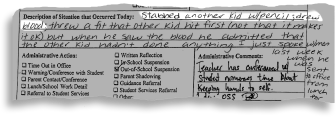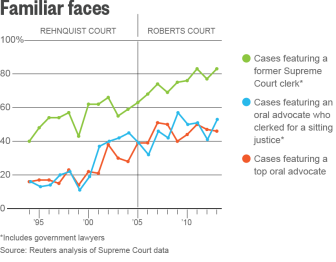 A data-driven investigation that exposed the human cost of school re-segregation in central Florida is the first-place winner of the 2015 Philip Meyer Journalism Award. Investigations that explored the growth of diversity in American cities and revealed the small cadre of attorneys who dominate the U.S. Supreme Court docket are also top winners.
A data-driven investigation that exposed the human cost of school re-segregation in central Florida is the first-place winner of the 2015 Philip Meyer Journalism Award. Investigations that explored the growth of diversity in American cities and revealed the small cadre of attorneys who dominate the U.S. Supreme Court docket are also top winners.
The Meyer Award, given annually by Investigative Reporters and Editors, recognizes the best use of social science methods in journalism. Steve Doig, chair of the Meyer Awards judging committee, said competition was especially strong this year.
“The large number of strong entries this year reflects the increasing use of complex data analysis in newsrooms,” IRE Executive Director Mark Horvit said. “The scope of the work being done by these winning journalists, and others throughout the world, is game-changing. It proves the impact that data-driven journalism can have and the ways it can both illuminate our changing society and expose systems that are failing to serve the public good.”
 First place is awarded to “Failure Factories” by Cara Fitzpatrick, Michael LaForgia, Lisa Gartner, Nathaniel Lash and Connie Humburg of the Tampa Bay Times.
First place is awarded to “Failure Factories” by Cara Fitzpatrick, Michael LaForgia, Lisa Gartner, Nathaniel Lash and Connie Humburg of the Tampa Bay Times.
The team used statistical analysis and linear regression of data from dozens of records requests to document how steady resegregation of Pinellas County schools left black children to fail at increasingly higher rates than anywhere else in Florida. The series focused on failures of school district officials to give the schools the support necessary for success. The judges praised the reporters for dogged work on a project that took 18 months to report and write, and noted that the results underscored what decades of sociological research has shown happens in racially segregated schools.
 Second place is awarded to “The Changing Face of America” by Paul Overberg, Sarah Frostenson, Marisol Bello, Greg Toppo, and Jodi Upton of USA Today.
Second place is awarded to “The Changing Face of America” by Paul Overberg, Sarah Frostenson, Marisol Bello, Greg Toppo, and Jodi Upton of USA Today.
The project was built around measurements across time of the racial and ethnic diversity of each of America’s more than 3,100 counties, going back to 1960 and projected ahead to 2060. The reporters used the results to reveal that high levels of diversity, once found only in a few Southern states and along the border with Mexico, had bloomed out into large areas of the upper Midwest and the Appalachians, for instance. Those results informed the assignments of reporters to find the local stories that illustrated those changes, with the results running in more than 100 Gannett papers and broadcast stations.
 Third place is awarded to “The Echo Chamber” by Joan Biskupic, Janet Roberts and John Shiffman of Thomson Reuters.
Third place is awarded to “The Echo Chamber” by Joan Biskupic, Janet Roberts and John Shiffman of Thomson Reuters.
The Reuters team analyzed the characteristics of more than 14,400 U.S. Supreme Court records from nine years worth of petitions seeking review by the Court. The analysis showed that 43% of cases eventually heard by the court came from a tiny pool of a few dozen lawyers who represent less than 1% of the more than 17,000 lawyers seeking such review. Further reporting showed that these elite lawyers, mostly representing large corporations, had strong personal connections with the justices, with about half of them having served as clerks to the justices.
For more information: Mark Horvit, IRE Executive Director, mhorvit@ire.org; or Steve Doig, Professor and Knight Chair in Journalism, Arizona State University, steve.doig@asu.edu.

